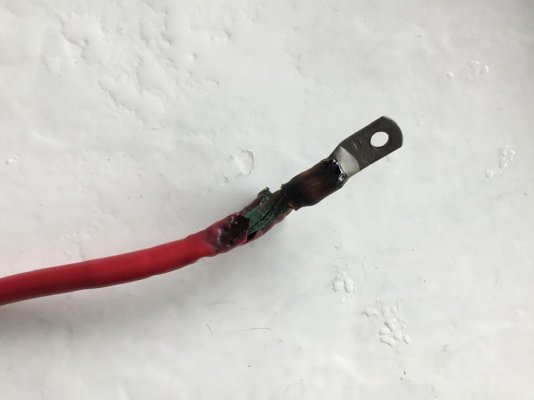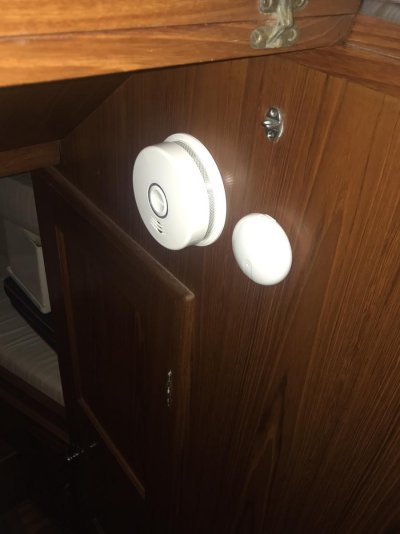I'm interested to hear why you've decided not to put a smoke detector in the engine room?
Have you considered a rate of rise heat detector? They can be a better early indicator of fire than high a temp detector. Detecting a fire as it builds before the trip temp of the fixed heat detector. Here's one that might work for you:
https://www.systemsensor.com/en-us/Documents/5600_Series_Manual_I56-2175.pdf I say might because I haven't looked into the tech details yet.
I'm looking to improve my engine room fire system and want early detection. I'll be installing the manual cable option on the auto / manual Fireboy / Xintex system. Early detection coupled with an engine room cam will allow me to make the decision to manually trip the bottle perhaps sooner than it's auto trip at a fixed temp.
After rereading the installation instructions for both units, I may pass on smoke and CO detectors in the engine room. Seems both units will suffer false alarms from numerous conditions commonly found in the engine room.
From Kidde:
8. Locations to Avoid
•• In the garage. Products of combustion are present when you start your automobile.
•• Normal cooking may cause nuisance alarms. If a kitchen alarm is desired, it should have an alarm silence feature or
be a photoelectric type.
•• Do not install within 6 ft. of heating or cooking appliances.
•• Less than 4” (10cm) from the peak of an “A” frame type ceiling.
•• In an area where the temperature may fall below 40ºF or rise above 100ºF, such as garages and unfinished attics.
•• In dusty areas. Dust particles may cause nuisance alarm or failure to alarm.
•• In very humid areas (above 95% RH, non-condensing). Moisture or steam can cause nuisance alarms.
•• In insect-infested areas.
•• Smoke alarms should not be installed within 3 ft (.9m) of the door to a bathroom containing a tub or shower, forced
air supply ducts used for heating or cooling, ceiling or whole house ventilating fans, or other high air flow areas.
•• Near lights. Electronic “noise” generated by the electronics may cause nuisance alarms.
•• Do not install near vents, flues, chimneys.
•• Do not install near fans, doors, windows or areas directly exposed to the weather.
While the rate of rise detector looks interesting, I think an adjustable detector could be more tailored to my specific engine room temperatures. I have a remote thermometer with maximum value display. It would seem setting the alarm about 10 or 15 degrees above that maximum value might be triggered more quickly if the engine is running. One of the advantages of a simple closing contact alarm system is that you can have more than one sensor or type of sensor.
Ted



